Search Results

J.J.
The first time I remember hearing of The Leukemia & Lymphoma Society (LLS) was through Team In Training (TNT), specifically from a brochure I picked up at a bike shop that invited one to train for a 109-mile bike ride with TNT. It was 2007, and I thought it sounded like a blast. I convinced my girlfriend at the time, Stacey, to join me. We used the occasion to buy some fancy new bikes. With some fundraising and committed training dates, we would be able to say we had done a Century Bike Ride! Cool!
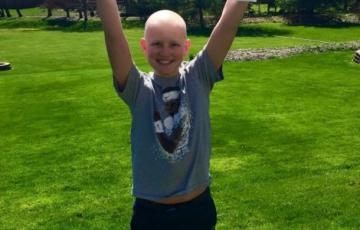
David
On June 17, 2014, 12-year-old David Stim visited his pediatrician's office to have a routine school physical. During the exam, the nurse practitioner noticed an enlarged lymph node on the right side of his neck and surmised that it probably due to a reaction to something, as is almost always the case in pediatrics. Since David had been treated for strep throat the month before, there was not much cause for concern.
Diagnosis
Diagnosing juvenile myelomonocytic leukemia (JMML) usually involves ruling out other similar diseases such as chronic myelomonocytic leukemia and chronic myeloid leukemia, especially if your child is older than 6 years. Doctors commonly use blood tests and bone marrow tests to diagnose JMML.
The tests used to diagnose JMML include:
Side Effects
Cancer therapy for hairy cell leukemia can sometimes produce side effects. For most patients, treatment side effects are temporary and go away once therapy ends. For other patients, side effects can be more severe, sometimes requiring hospitalization.
Before you undergo treatment, talk with your doctor about potential side effects. Drugs and other therapies can prevent or manage many side effects.
Signs and Symptoms
In the early stages of myeloma, some patients have no signs or symptoms of the disease. It is sometimes detected before symptoms appear, when results of laboratory tests done as part of a routine medical examination show abnormalities in the blood and/or urine. When symptoms are present, the most common ones are bone pain and fatigue.
Signs of MyelomaDoctors sometimes refer to the acronym, CRAB, to describe signs of myeloma. The letters stand for
Dental Health
Dental care is an important part of overall cancer care. Good nutrition also plays a big role in dental health. Problems with the teeth, gums or mouth can interfere with eating well. Poor nutrition can lead to dental problems.
Visit the dentist at least four weeks before treatment begins if possible, and
Stem Cell Transplantation
The goal of stem cell transplantation is to cure the patient’s cancer by destroying the cancer cells in the bone marrow with high doses of chemotherapy and then replacing them with new, healthy blood-forming stem cells. The healthy blood stem cells will grow and multiply forming new bone marrow and blood cells. There are two main types of stem cell transplantation. They are

Christine
Christine Attia knows first-hand how overwhelming and terrifying a blood cancer diagnosis can be. She lost her 27-year-old fiancé three years ago after a courageous six-month battle with acute myeloid leukemia (AML), a blood cancer which has seen few improvements in treatments in more than 40 years.

Sarah
I am the mother of Madelynn, aka Maddie, who was diagnosed with biphenotypic acute leukemia (BAL) on March 13, 2023, following months of illness initially thought to be a sinus infection. Despite multiple doctor visits and two trips to the emergency room, it wasn’t until Maddie’s condition worsened that she received the correct diagnosis, which involved both acute lymphoblastic leukemia (ALL) and acute myeloid leukemia (AML) with the Philadelphia chromosome. Maddie immediately began an aggressive chemotherapy regimen and spent the first month of her treatment in the hospital.

Maria
My son, AJ, was diagnosed with leukemia on September 23, 2014, and from then on, our life changed. AJ had bumps, turns, and stops during his treatment, but we were lucky to have found The Leukemia & Lymphoma Society (LLS) about a year into his 3¼-year treatment protocol. Our first event was a Light The Night (LTN) walk one year, one month, and one day from his diagnosis date. It was a special evening where AJ was able to see so many survivors and be surrounded by people who supported him.

Lisa
On February 3, 2020, my life changed forever. My husband and I welcomed our first child, a baby girl named Quinn. But, three weeks after she was born, I started to not feel the best.
On Friday, March 13, 2020, the day of the COVID-19 shutdown, my life changed forever again. After two weeks of having fevers and night sweats and being tested for everything but cancer, I went in for scans. Two hours after I had my scans, I got the call that nobody wanted to hear. I had cancer.

Laura
It’s hard to even know where to begin. I was 63 years old, a happily working professional in health policy and advocacy. I know the power of an organization like The Leukemia & Lymphoma Society (LLS); a daughter, wife, mom, grandma, and dog mom.
I was traveling with my husband, and I had a side pain. I thought might be a gallstone.

Dustin
December 3, 2016, was the date that I was supposed to get married to KT. It was a Saturday. We had that date set for over a year, but there was no wedding—we canceled it the Tuesday before. KT informed most of our guests with an explanatory text: “So, I have some unfortunate news. We’re going to have to call off the wedding this weekend. Dust got cold feet…and leukemia.”

Sonia
I am a two-time cancer survivor, first diagnosed in 2004. Fortunately, I received treatment at Rush University Medical Center, a teaching hospital closely affiliated with The Leukemia & Lymphoma Society (LLS). During my initial treatment, I underwent CHOP chemotherapy alongside the groundbreaking drug Rituxan® discovered through LLS research. My doctor explained how Rituxan® would ensure my survival, sparking my curiosity, and leading to a meeting with a representative from LLS. The gratitude I felt during that encounter was overwhelming.
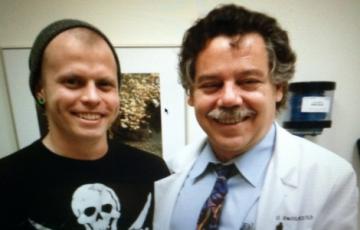
Grant
I’m a junior-ish chemistry major at Waynesburg University. The reason I say “junior-ish” is because on Mar 12, 2013, I was diagnosed with non-Hodgkin lymphoma, a blood cancer. Because of this, I had to withdraw for two semesters of school during spring break of my junior year. I went through 23 weeks of chemotherapy, and after a few speed bumps along the way, I was declared in remission on Aug 15, 2013.

Jay
Nana’s Heroes was started to honor Lois “Nana” Bowen. When he found out she was sick, Jay, Nana’s grandson, was 13. Around ninth grade, he wanted to do something about it. Although he couldn’t fix her all up or make her all better, he could help raise money to help find a cure for the awful disease that she had.
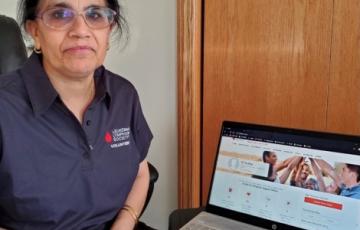
Sudha
Sudha Bhatnagar moved from India to Massachusetts in 1979. Shortly after, she met her husband and moved to Pennsylvania. At the time, the company she worked for allowed her to work from home because they were based in Massachusetts.
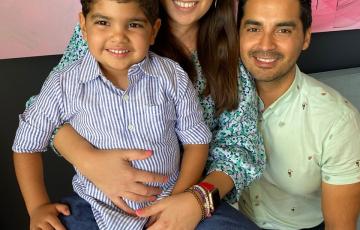
Leo
Five-year-old Leo was diagnosed with T-cell acute lymphoblastic leukemia (T-ALL) in June 2019. His parents had noticed bruising on his legs, petechiae around his eyes, fatigue, and shortness of breath, but because the symptoms didn’t present all at once, they didn’t think it was anything serious. Thankfully, on a Friday afternoon, Leo was due for a check-up where the nurse noticed the bruising on his legs and ordered a blood test.

Erica
By the time I was 32 years old, I was a 3-time cancer survivor. At 22 years old, I was diagnosed with MALT lymphoma, at a time (1999) when the doctors knew very little about it and believed it had only been found in men over the age of 80 in their stomach (mine was found in my neck).

Janie
I was first diagnosed with stage 4 diffuse large B-cell lymphoma (DLBCL) in December 2017. I got through Christmas very weak and started chemo the first week of January 2018. My son had given me a Winnie the Pooh stuffed animal that Christmas, so Winnie became my mascot and went with me to every chemo treatment for the entire six months. Everyone at my cancer center loved to hug Winnie. He is very soft! He was brave and strong, even when my doctor told us we needed to add two additional treatments to complete the dosage protocol.
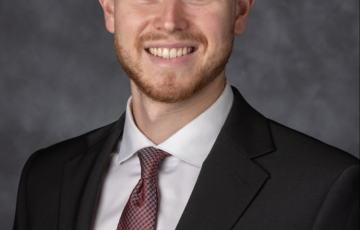
Ryan
At 22 years old, I was diagnosed with acute myeloid leukemia (AML). My first hospitalization was a month long which was followed by four more hospital stays for my chemotherapy treatments. In between each of those hospitalizations were home nursing visits, blood transfusions, doctor’s appointments, and even more hospitalizations to treat potentially life-threatening infections. I lost a total of 40 pounds throughout those months. Despite the many struggles I encountered during those months, I was able to successfully complete my treatments.
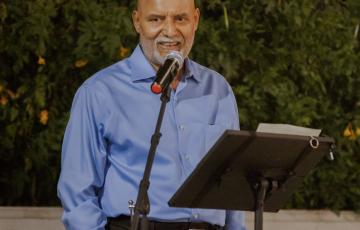
Kailash
On April 20, my 79-year-old father was diagnosed with acute myeloid leukemia (AML) after a routine blood test. A scientist, he explored all of his options thoroughly. The Leukemia & Lymphoma Society (LLS) was instrumental in providing us with accurate, up-to-date information about AML. He has chosen to prioritize his quality of life. Instead of chemo, he is spending his final chapter with friends, family, and favorite activities.
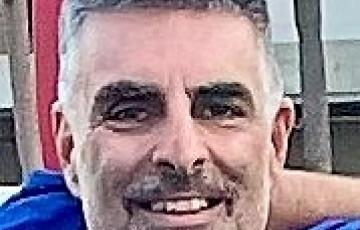
Al
I am a four-time cancer "survivor" (not totally comfortable with the term), just grateful to be alive. I was first diagnosed with testicular cancer in 1997. I had surgery to remove a testicle and radiation as a follow-up.
Christopher
Chris was diagnosed with T-cell acute lymphoblastic leukemia (T-ALL) in January 2022. He underwent several rounds of chemo and a bone marrow transplant (his sister was a perfect match!) to put him in remission in May 2022. During the course of his remission, we bought a house, got married, and planned a wedding until he relapsed one year to the date of his initial diagnosis.
Legal and Financial
Advance DirectivesAdvance directives are a patient's instructions about future medical care in case he or she can no longer speak for himself or herself. Ideally, an advance directive should be in place before a person becomes ill or before a crisis.